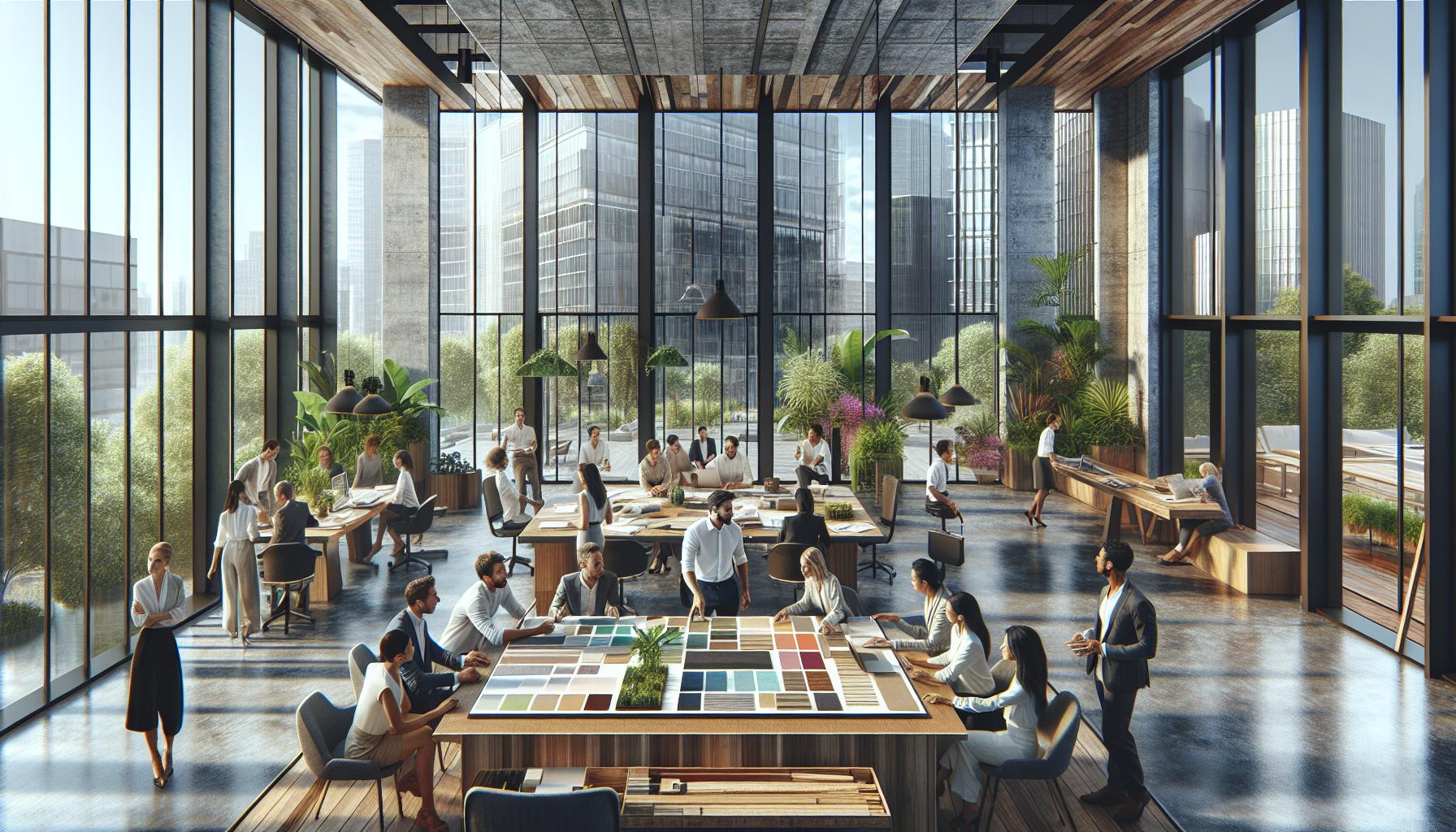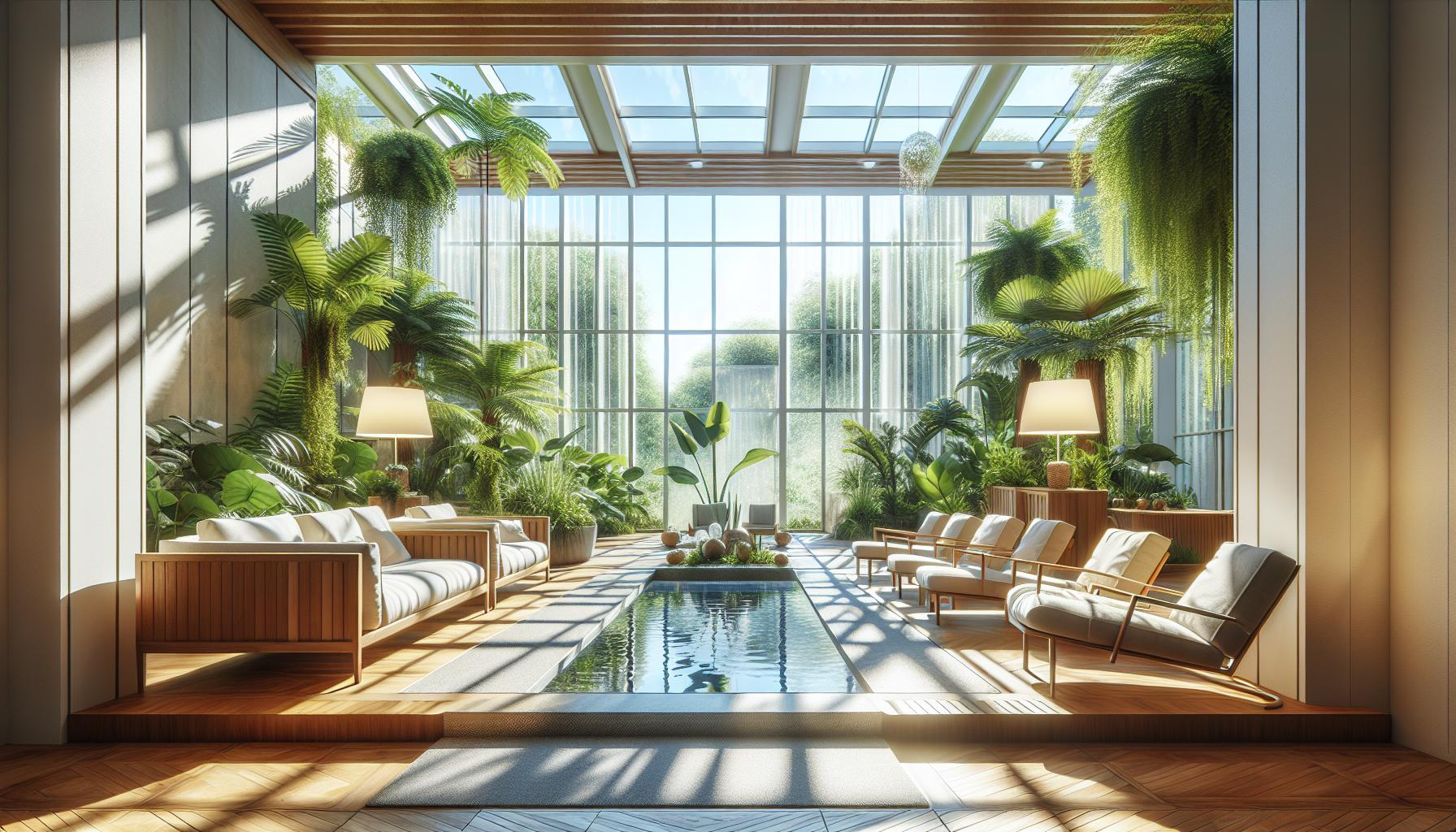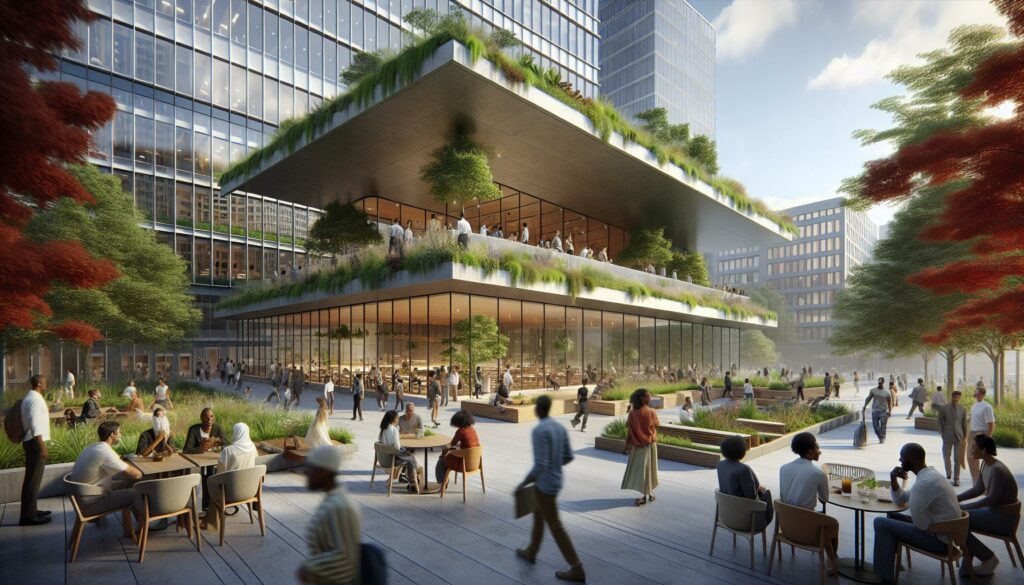As 2024 approaches, architects and designers are gearing up to unleash a wave of creativity that’s bound to shake up the industry. Forget everything you thought you knew about traditional design—this year’s trends are all about bold statements and innovative materials that’ll make even your grandma’s living room look like a museum exhibit.
Architectural Design Trends 2024
Architectural design trends 2024 emphasize creativity and innovation. Bold designs will emerge, pushing boundaries and redefining conventional aesthetics. Sustainability remains at the forefront, with architects incorporating eco-friendly materials and energy-efficient systems.
Natural light plays a vital role, enhancing the connection between indoor and outdoor spaces. Additionally, open floor plans will gain popularity, facilitating flow and flexibility in living arrangements. Multifunctional spaces will cater to diverse needs, reflecting modern lifestyles.
Technological integration continues to evolve. Smart home features will enhance convenience and efficiency through automation. Virtual and augmented reality tools facilitate design visualization, allowing clients to engage with projects more interactively.
Color palettes will veer towards earthy tones, promoting tranquility and wellness. Textures will also become essential, adding depth to spaces through the use of mixed materials.
Listeners should note the revival of traditional craftsmanship, marrying vintage techniques with contemporary designs. Personalization in spaces will resonate, allowing homeowners to express unique identities.
Lastly, communal spaces will thrive, encouraging social interaction and collaboration, fostering a sense of community within urban settings. These trends illustrate a dynamic shift in architectural design, marking a significant step toward a more innovative and human-centered future.
Sustainable Design Innovations

Sustainability in architecture continues to gain traction in 2024, with an emphasis on innovative solutions that minimize environmental impact. Architects and designers increasingly prioritize eco-friendly practices throughout their projects.
Eco-Friendly Materials
Innovative materials play a central role in sustainable design. Recycled materials, such as reclaimed wood, concrete, and metal, reduce waste while adding unique character to spaces. Biodegradable options, like bamboo and cork, enhance aesthetics while ensuring a lower ecological footprint. Manufacturers also explore the use of low-VOC (volatile organic compound) paints and finishes to improve indoor air quality. Choosing materials that contribute to energy efficiency, such as high-performance insulation, further enhances sustainability. The integration of living walls and green roofs creates natural habitats, improving biodiversity and air quality.
Energy Efficiency Solutions
Energy efficiency remains a priority for modern architecture. Incorporating smart technology enables real-time monitoring and optimization of energy use. Solar panels and wind turbines offer renewable energy sources, reducing reliance on fossil fuels. Passive solar design strategies, like strategically placed windows and thermal mass materials, maximize natural light while minimizing heating and cooling demands. Furthermore, high-efficiency HVAC systems substantially decrease energy consumption. The use of rainwater harvesting and gray-water recycling systems can further enhance sustainability, making buildings not only energy-efficient but also resource-conscious.
Integration of Technology

Technology integration is transforming architectural design in 2024. Enhanced smart home and building features lead this evolution, creating spaces that offer convenience and control.
Smart Homes and Buildings
Smart homes showcase advanced features that cater to user needs. Integrated systems allow homeowners to manage lighting, temperature, and security through mobile devices. Smart appliances work seamlessly with energy-efficient technologies, reducing consumption while maximizing comfort. Buildings equipped with sensors consistently monitor occupancy, adjusting climate control automatically to maintain optimal conditions. Many architects prioritize sustainable practices, incorporating renewable energy sources like solar panels directly into the design.
Automation in Design
Automation in design streamlines construction processes, improving efficiency. Designers utilize software that automates repetitive tasks, allowing greater focus on creativity. Virtual reality tools enable architects to visualize projects before construction begins, fostering collaboration and reducing costly revisions. Automated systems in buildings enhance functionality and user satisfaction, as features adapt to both daily and occasional needs. Enhanced modeling techniques, such as Building Information Modeling (BIM), provide real-time updates, ensuring all stakeholders remain informed throughout the design process.
Biophilic Design Principles

Biophilic design principles focus on integrating natural elements into architectural spaces, promoting well-being and sustainability. This approach emphasizes a strong connection to the environment.
Natural Elements in Architecture
Natural elements enhance architectural spaces by incorporating features like wood, stone, and plants. Use of large windows allows ample sunlight to flood interiors, creating bright, inviting atmospheres. Living walls add greenery and improve indoor air quality. Incorporating water features provides tranquility and promotes relaxation. Thoughtfully placed natural materials ground spaces, fostering a sense of harmony and balance with nature. Architects prioritize these components, reflecting a growing commitment to eco-friendly practices in design.
Creating Connection with Nature
Creating a connection with nature enhances occupants’ experiences and promotes mental health. Open spaces with direct access to outdoor areas encourage interaction between indoor and outdoor environments. Views of landscapes foster a sense of serenity and well-being. Architects design pathways that lead to gardens or natural settings, encouraging movement and exploration. Incorporating natural light significantly improves mood and cognitive function. Prioritizing these connections encourages sustainable living, reinforcing the bond between people and their environment.
Minimalism and Simplicity
Minimalism and simplicity are at the forefront of architectural design trends 2024. This approach emphasizes clean lines and uncluttered spaces, which resonate with a desire for calm and order in chaotic environments.
Streamlined Aesthetics
Streamlined aesthetics play a crucial role in modern architecture. Large, open areas enhance feelings of space and freedom. Neutral color palettes create a sense of tranquility. Borrowing from nature, earthy tones establish a soothing environment. Elements often include unobtrusive furniture and minimal decor, emphasizing functional beauty. Natural materials complement these designs, providing warmth and texture. This simple yet sophisticated look attracts many homeowners seeking a serene ambiance.
Functional Spaces
Functional spaces maximize usability while maintaining an uncluttered look. Design focuses on flexibility, enabling rooms to serve multiple purposes. Open floor plans invite collaboration and community interaction, catering to contemporary lifestyles. Smart storage solutions reduce visual clutter and increase organization. Each element serves a distinct function, merging aesthetics and practicality seamlessly. Architects prioritize these aspects, ensuring that simplicity does not compromise usefulness. Overall, the shift toward functional design enhances daily living.
Future of Architecture
Architectural design trends 2024 is set to embrace creativity and sustainability like never before. As bold innovations redefine spaces traditional aesthetics will be transformed into extraordinary environments.
The emphasis on eco-friendly materials and smart technology reflects a commitment to reducing environmental impact while enhancing convenience. Biophilic design principles will create harmonious connections between indoor and outdoor spaces promoting well-being and tranquility.
With a focus on minimalism and functionality these trends not only cater to modern lifestyles but also foster a sense of community. As architects push boundaries the future of architecture promises to be both inspiring and human-centered.



